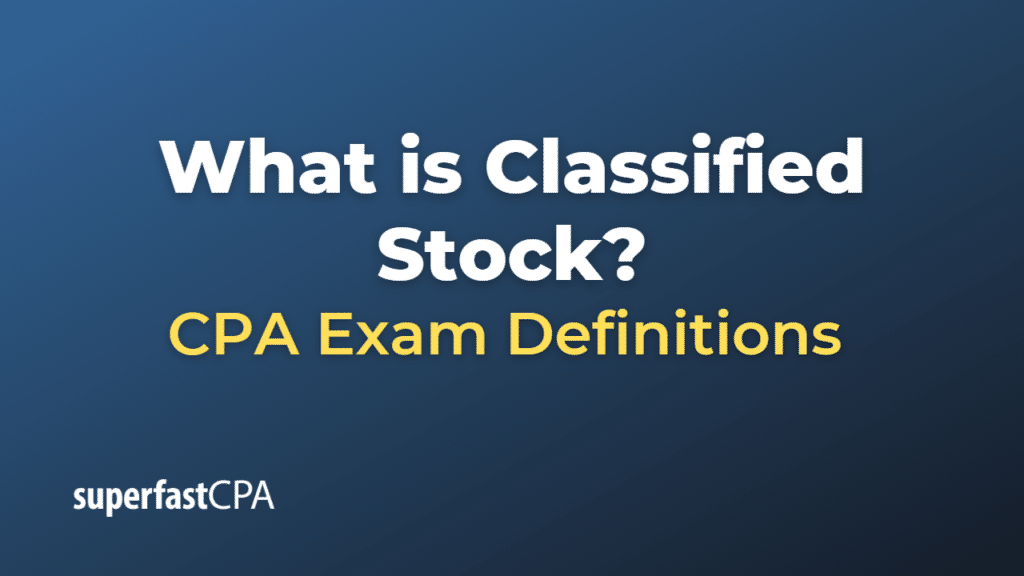Classified Stock
Classified stock refers to a company’s shares that are divided into different classes, each with its own distinct rights and privileges. Classified stock allows a company to tailor specific rights, preferences, and restrictions for different groups of shareholders, such as voting rights, dividend rights, or liquidation preferences. This approach is typically used by companies that wish to provide different levels of control or benefits to various groups of investors or stakeholders.
Some common classes of classified stock include:
- Class A Shares: These shares often come with enhanced voting rights, such as the ability to cast multiple votes per share. Class A shares are usually held by founders, family members, or key investors who want to retain more control over the company’s decision-making process.
- Class B Shares: These shares usually have standard or reduced voting rights, such as one vote per share. Class B shares are often issued to the general public, allowing them to participate in the company’s ownership and financial success but without granting them the same level of control as Class A shareholders.
- Preferred Shares: These shares have preference over common shares in terms of dividend payments and liquidation. Preferred shareholders typically receive a fixed dividend before any dividends are paid to common shareholders, and they have priority in receiving assets if the company is liquidated. However, preferred shares usually do not carry any voting rights or have limited voting rights.
Companies may also issue other classes of stock with specific rights and preferences tailored to their unique needs or circumstances. The exact terms and conditions of each class of stock are specified in the company’s articles of incorporation or bylaws.
Classified stock can be an effective tool for managing the control and distribution of benefits among a company’s shareholders. However, it can also create complexities and potential conflicts of interest between different classes of shareholders, particularly when it comes to voting rights and decision-making authority.
Example of Classified Stock
Let’s consider a fictional technology company, “TechGuru Inc.” The company has decided to issue classified stock to create a structure that enables the founders and key investors to retain control while still raising capital from the public. TechGuru Inc. has created the following classes of stock:
- Class A Shares: These shares are held by the founders, key investors, and management team. Each Class A share comes with 10 votes per share, ensuring that these shareholders have significant control over the company’s decision-making process. There are 5 million Class A shares issued, totaling 50 million votes.
- Class B Shares: These shares are issued to the general public through an initial public offering (IPO). Each Class B share has 1 vote per share, allowing public shareholders to participate in the company’s ownership but without providing them the same level of control as Class A shareholders. There are 20 million Class B shares issued, totaling 20 million votes.
- Preferred Shares: These shares are issued to a select group of investors who are willing to provide additional capital for the company’s growth. Preferred shares have no voting rights, but they receive a fixed dividend of $1 per share annually before any dividends are paid to Class A or Class B shareholders. Additionally, preferred shareholders have priority in receiving assets if the company is liquidated.
In this example, TechGuru Inc. has utilized classified stock to create a structure that allows the founders and key investors to maintain control over the company’s strategic direction, while also raising capital from the public and providing a specific group of investors with preferential dividend rights and liquidation preferences. This approach can help the company balance the needs and interests of various stakeholders while ensuring that the founders and key investors can continue to guide the company’s long-term success.













